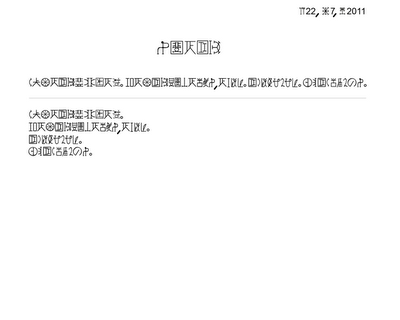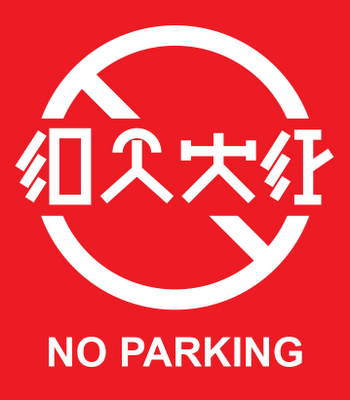Amadeo Mukadi, “The Decolonization of the Congo,” African History Quarterly 59:288-96 (Fall 2005)
… On June 30, 1955, the Congo Reform Congress filed suit once again in the Court of Arbitration, demanding immediate self-government at the provincial and national levels. At the same time, it declared a nationwide general strike, called for protest marches throughout the country and called on all Congolese to reject the colonial government’s authority.
The impact of the Congress’ call varied widely across the country. In rural districts where the municipal elections had brought cooperative local elites to power [1] participation was minimal, and the police, backed by private security forces, crushed incipient protests. The capital of Malebo, though, was paralyzed: most people took part in the strike, and few of the others dared come to work at the risk of being attacked by Congress mobs. The provincial capitals and transportation hubs were also shut down, and although work continued in the countryside, products couldn’t get to market.
Needless to say, no one was satisfied with this state of affairs. By August, the protests had begun to take on the characteristics of a low-level civil war, with corporate security forces attacking cities in an attempt to forcibly reopen the railroads while Congress fighters infiltrated the countryside to mount revenge attacks and organize resistance cells. In the meantime, the Congress’ rhetoric turned more and more against the Court of Arbitration itself, and the protesters in the cities attacked police stations, record offices and other symbols of government power as well as the white-only private clubs and stores that had persisted despite the advent of legal equality. The government itself was caught in a dilemma: should it attempt to restore order in a colony that the Court of Arbitration was likely to give up anyway, and would such an attempt only fan the flames?
Then things got worse.
In late October, rumors began to spread of a bench memorandum being circulated among the Court of Arbitration judges. The memo supposedly outlined a plan under which the rubber, mining and forestry companies, and their governmental patrons, would fund the Court of Arbitration’s peacekeeping activities in exchange for deeding Congo to them as a private concession rather than giving it independence under a popular government. The rumor had it that the memo was supported by psychological and anthropological reports that reflected the worst of nineteenth-century scientific racism.
There was, of course, no such memo. Corporate interests did make racist arguments to the court, as they had done for years, but no one had offered the court an enormous bribe (which was higher than the annual profits the concessionaires took out of the Congo), nor, based on internal papers subsequently released by the court, did the judges take such arguments seriously. But in the febrile atmosphere of pre-independence Congo, after years of collaboration between the concessionaires, local elites and officials nominally responsible to the court, the rumors had an air of believability. Many people claimed to have seen excerpts of the memo – what they had in fact seen were legal briefs and dossiers filed by the anti-independence side, which were mistaken for official documents because they bore the file-stamp of the court – and the public became convinced that the court was about to hand the Congo outright to the concessionaires.
Both the court and the Congress denied the existence of the memo, but to little avail. Protests quickly turned into riots, spreading throughout the International Congo and even into the German and Portuguese trusteeship zones. By the end of the year, much of the country was in a state of insurrection, and it had slipped as much out of the Congress’ hands as out of the government’s, with many areas controlled by local party chiefs or ethnic leaders.
Now, the Court of Arbitration did try to restore order, putting the cities under martial law and decreeing a temporary ban on strikes and protests. The Congress defied the ban, leading to street confrontations between international troops and Congolese protesters, with the African troops particularly despised. Both inside and outside the cities, troops faced ambush and kidnapping, and some of them enacted unofficial reprisals.
Amid the spiraling chaos, the court finally threw up its hands. On March 21, 1956, the court issued a short decision – itself a departure from the lengthy, analytical rulings that had characterized its previous Congo jurisprudence – stating that the Congolese had “reached a sufficient level of development” to achieve independence. In a schedule to the ruling, the court named a transitional cabinet and parliament as well as provincial councils, all composed of Congress leaders, senior Congolese civil servants and local elected officials. The transitional bodies would hold power for two years until elections could be organized, and the court would hand full control to them “once a requisite level of order has been restored.”
If the court had expected this proclamation to stop the fighting, it was disappointed. The Congress declared that it would participate in the government and called on its supporters for calm, but many areas were outside its control, and the country was full of factions with axes to grind that felt left out of the transitional process. In the lower Congo, Bakongo nationalists declared an independent kingdom; a coalition of provincial and district officials in Bandundu, backed by local concessionaires, formed a republic; other breakaway states emerged among the Luba and the Mongo or in areas under the sway of charismatic leaders.
International troops still fought in the Congo for the remainder of 1956 and into 1957 – although in an ironic turnabout, they now fought to install a Congress-led government – and . In the meantime, the Court of Arbitration belatedly planned an exit. Ordinarily, the court would be expected to play the role of peacemaker and broker, as it had done in East Africa at the end of the previous decade [2], but here, where the court itself had been the colonial power, it lacked the credibility to do so. Instead, it sought to assemble a coalition of the Congo’s wealthier and more developed neighbors to provide expert aid and financial support. This effort was partly successful, and Malebo filled up with aid workers from Gabon, the African provinces of Portugal, the Copperbelt and Zanzibar, although their relationship with the transitional government would be fraught.
Finally, in January 1958, sufficient order had been restored around the capital and in the lower Congo for the formal change of power to take place. A transfer commission made up of representatives from the neighboring countries oversaw the handover of military installations, government offices and rail networks, and the Court of Arbitration’s flag came down in Malebo, leaving the Congress-designed Congolese flag to stand alone. At the same time, the remaining foreign troops in the trusteeship zones withdrew, and in theory, the western Congo was reunited for the first time since the Great War.
In practice, that was less than fully true. Much of the country still remained outside the government’s control, and although an election was held on schedule in March 1958, voting could only be carried out in half the provinces, and the deputies from the other provinces had their terms extended by default. It would be 1959 before the consortium of neighboring states could broker a constitution that was agreeable to the breakaway factions and the election was completed.
The Congo thus embarked on its brief “confederation period,” characterized by broad provincial autonomy and domination of the national government by a council of provinces. This restored civil peace, but it also split the country into small units that, in many cases, concessionaires or other outside interests were able to dominate. The pattern established during the local elections of the 1950s, in which company-sponsored local aristocrats dominated the municipal councils and civil service, played out on a provincial level during the early 1960s. In the local and provincial elections of 1962, the Congress won majority control of several provinces but was virtually shut out in neighboring ones, and the weak government in Malebo had little ability to rein in the provincial machines.
By this time, though, a movement to “complete the struggle” was percolating in the provinces under the leadership of George Tshilengi. Tshilengi was a Luba – an ethnic group that had retained more coherence than most under the international regime, and had parlayed its mercantile connections into better treatment than most African peoples received – and he came from a family of traveling merchants, minor functionaries and intellectuals. He had been a member of the Congress since the age of fifteen, and had become a leader of its more radical wing. Now he argued for full democracy in the provinces and the removal of all foreign ownership of the economy, and with the aid of civil war veterans, he built a network of self-defense groups and political alliances in the rural areas.
The general election of 1964 would be a turbulent one, fought as much within the Congress as between parties and featuring pitched battles between political and corporate militias, but the discontent in the countryside gave Tshilengi the balance of power in the federal parliament and council of provinces. He quickly moved to consolidate his power, buying off some rivals with political offices and neutralizing others through scandal and prosecution, and by early 1965, he held both the weak presidency (in which his opponents had initially hoped to contain him) and the substantially stronger premiership.
His regime would prove even more radical than many had anticipated. During the campaign, he had emerged as one of the strongest critics of the emerging post-Westphalian world order, arguing that regional autonomy, cross-border unions and treaty agencies might work well where the rule of law was strong, but where the state was weak, they merely facilitated tribalism and corporate rule. In 1966, he felt strong enough to put these objections into action, abrogating the 1959 constitution and re-establishing the Congo as a centralized unitary state. At the same time, he announced the suspension of all elected bodies, and even as he did so, troops from the national army and his political faction occupied government buildings throughout the nation.
Tshilengi’s auto-coup touched off another round of provincial rebellion, and several regions in the north and east remained out of reach, but by this time the Congo had a genuine army, and in most of the country, the regular army and factional militia were able to trap the rebels in a vise. By 1967, Tshilengi was able to promulgate a new constitution in which all provincial and municipal officials were centrally appointed and in which all political parties, including the Congress, were outlawed. An election held later that year was limited to candidates who “supported the ideals of the national movement,” and although more than one candidate was allowed to run in most districts, the incoming parliament was very much Tshilengi’s creature.
Having achieved absolute political power, Tshilengi now focused on the concessionaires and foreign experts, the latter of which he viewed as little more than partners in the continuing exploitation of Congolese resources. He ordered all foreign-owned companies to sell a majority of their shares to Congolese owners or face nationalization – a demand that most obeyed, although the Congo would face international compensation claims for decades – and expelled the aid workers from the neighboring states. In late 1968, the government announced a crash industrialization program that began with import substitution but also included refinement of Congolese natural resources, and devoted nearly all of its declining foreign exchange to construction of industrial infrastructure.
The International Congo had always been an experiment, and by 1970, the independent Congo had become an experiment of a different kind. A real sense of nationhood was taking hold in the country, and a single law, finally, was applied to everyone. The decline in production that had followed the semi-nationalization of the concessionaires was starting to turn around as Congolese gained experience in management, and the beginning of industrialization promised a more even distribution of wealth. But the Congo had become a dictatorship under the growing personality cult of Tshilengi, dissenters faced increasingly harsh repression, and the freedom the Congress had fought for seemed as far away as ever. A vibrant civil society had grown up in the Congo between the 1920s and 50s, and the question now was whether it would save the country or be crushed…
_______
[1] See post 5186.
[2] Ibid.






